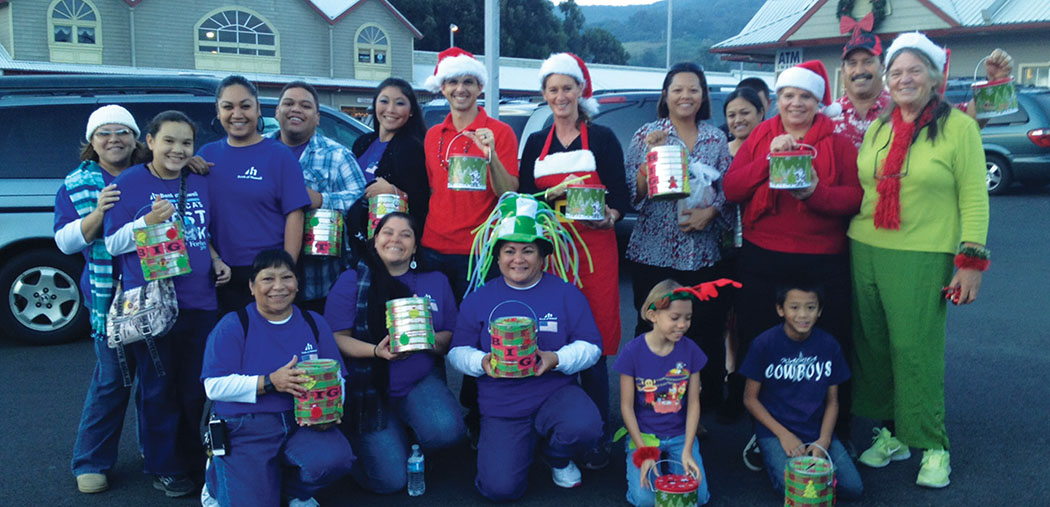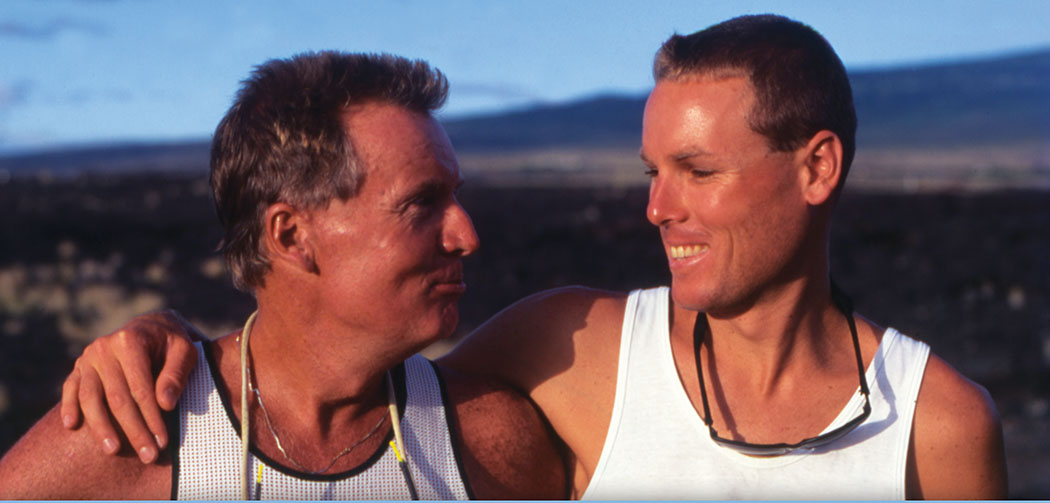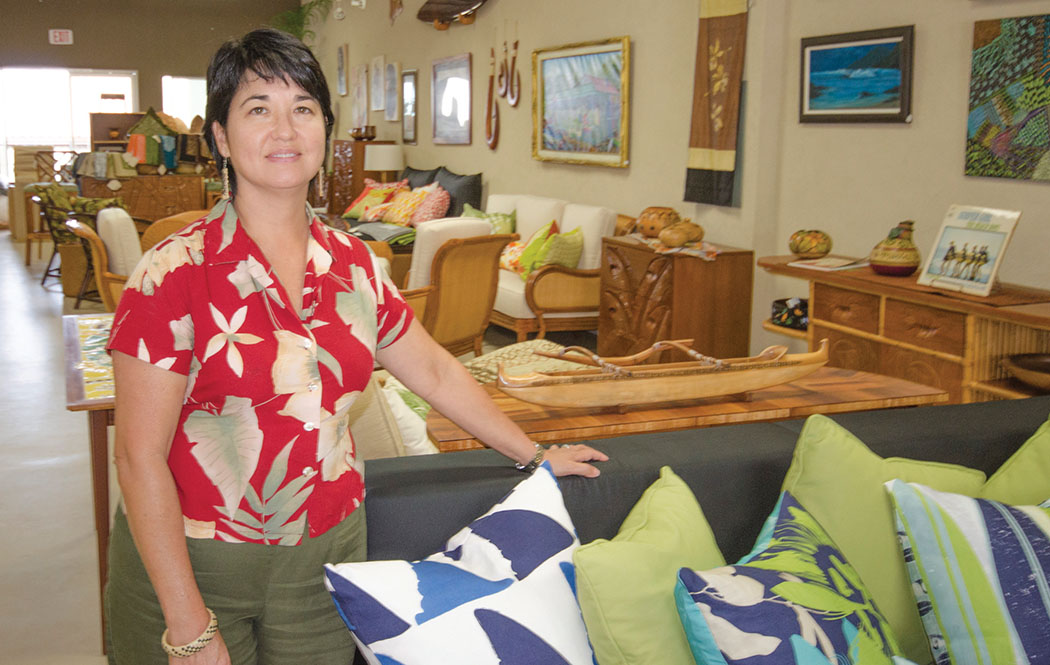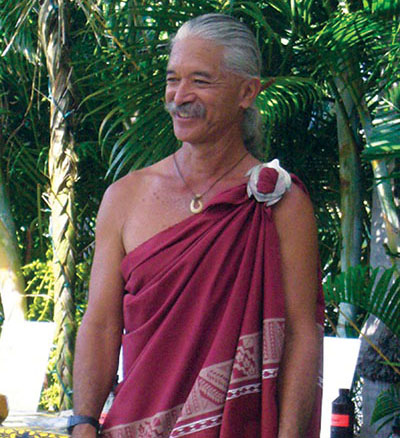
Kūpuna Talk Story–Kai Kaholokai: Native Hawaiian Cultural Practitioner, Kumu Lā‘au Lapa‘au
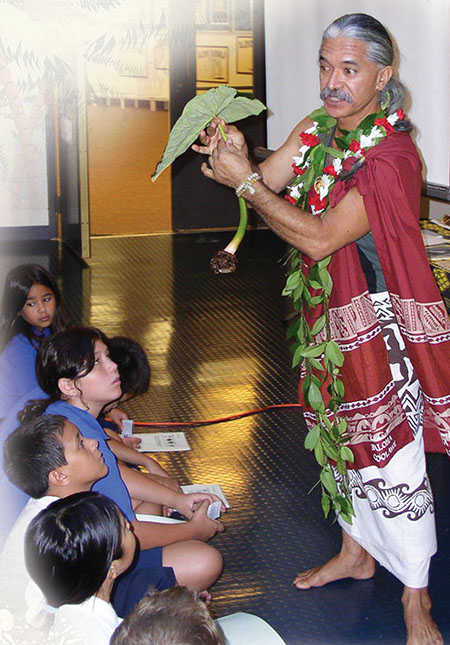
By Keith Nealy
As a filmmaker and storyteller, I have been blessed with the gift of sharing the mana‘o (knowledge) of more than 60 of Hawai‘i’s most revered kūpuna in spirited conversation exploring the cultural legacy they carry in their memory. Each conversation has been a journey back in time into the world they inhabited, through their eyes and expressed in their words.
This conversation is with Kai Keali‘ikea‘ehale O Kaholokai. Aside from being a teacher of Hawaiian herbalism, Kai Kaholokai is also a Kumu Lomi Lomi (teacher of Hawaiian massage) and the founder of the Kai Malino Wellness Center. He holds a BA in Sociology and Anthropology and has been propagating and gathering indigenous Hawaiian plants, farming taro, and studying archeology in the North Kohala district since 1973.
Keith: Kai, A big part of what you do today is grow and gather lā‘au lapa‘au or Hawaiian medicinal plants so you can teach and heal patients. Is this something that was taught to you as a young boy? I’ve heard that Hawaiian children are often assigned a kuleana, or a responsibility. Did you have that experience in your family?
Kai: Yes, as a child, you learned your role. You knew your responsibilities, and for me, I grew up gathering. It was just a way of life. So that’s how I began as a gatherer. Things from the ocean, things from the mountain, and your role develops from what your parents need and what your grandparents need. In that way, it’s all part of your contribution in the family or ‘ohana.
You’re taught that gathering is a way of providing for your family and it was understood. It just happens that you had this gift that it came easy to you. You get out in the ocean and you have this gift, not that all of a sudden you’re a great diver, but you learn. And then you find out—wow—I can do this!
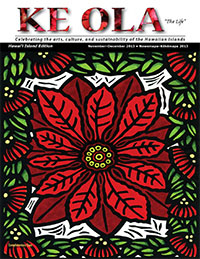
Keith: Tell me about native Hawaiian healing practices and why they are different.
Kai: Well, subject to interpretation. The word ‘healing’ in the Western culture is different. They [Westerners] take it upon themselves to give credit to the presenter or doctor. The presenter presents something to the patient, then, he automatically gets the credit of “healer” for the patient. Where the native intent is—he is just a mediator—the credit goes back to “the Source.” It’s about Spirit. Always has been and always will be.
And then, when there is an imbalance with the spirit—mentally and emotionally—what it does is manifest itself in the physical. And all we see is the physical. As we get still, we realize that we have a spirit within us. And because we have a spirit that means a lot more elements are involved to make the spirit whole. But we only give it a physical manifestation and we deal with just the physical. So if you go back to the spirit—see from your awareness—then you see how you can navigate your thinking correctly. To set things right. That’s when the ho‘oponopono—the comforting word—the understanding of what occurred with the situation, the seeing of the signs, the symbols—all that has an awareness factor of what led to the physical manifestation.
In allopathic [Western] medicine, they have good intentions, but once they realize it’s not working on the physical then they neglect to go back to Spirit. And whenever you [can go] back to Spirit then you can be realigned. If you come from Spirit, you will never have a problem.
No native person would neglect something that is Spirit. They embrace it. If you come here with Spirit, it is not their place to not accept you. It’s only when you’re not coming from Spirit, when you’re coming from ego or you’re coming from power and control, then it’s not right. Then what you say is not balanced. This is a no-win situation.
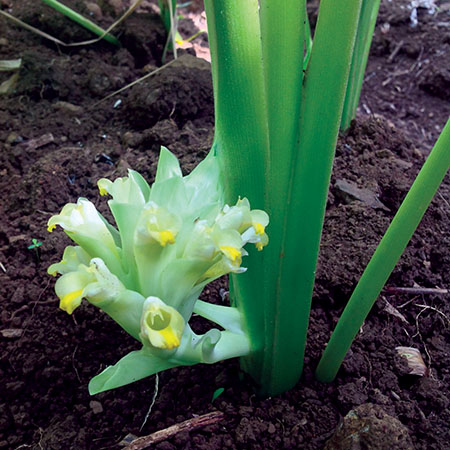
Keith: Tell me about the lā‘au lapa‘au – the medicinal plants and where they came from and how you learned about them.
Kai: When you’re talking medicinal, it’s all part of the Creator Consciousness. There is no such thing as non-medicinal plants; it’s just a misconception. It’s all part of God’s creation. So all is good. And every culture has their own favorites. Or their own uniqueness. Something that over time worked for them for generations. And each clan has their own—the ocean people, the mountain people—each have their own favorites that they passed down through the generations.
And I’ve been blessed because I have families of both the mountains and the ocean. So I embrace all of the things of the mountain and all of the things of the ocean. When you embrace both you see even more in appreciation of what is and so in the gathering it makes it easy to ask permission— to gather what you need, to manage your resources.
Keith: I’ve heard so much about medicinal plants like ‘olena, or turmeric, a common spice now found in every grocery store. Why does consuming ‘olena make me healthy?
Kai: Well, it’s a lot more than that. When we talk about turmeric or ‘olena—I’ve been growing it for 14 years—and even when you see all the chemical analysis and all the data of what it is, it comes back to Spirit—the spirit of the plant. If you have a pili lōkahi, a relationship with the spirit of the plant, like with the spirit of another individual—soul-to-soul, spirit-to-spirit—when you have that relationship—it’s that bonding that takes things out of the physical.
For example, if we are evolving, as we know we are, the plants are evolving. So even though what is written about the plant’s chemical property, when the spirit takes on this bonding relationship, the plant literally goes out of its chemical properties to help you because of the spirit of your relationship. And when it does, you become whole.
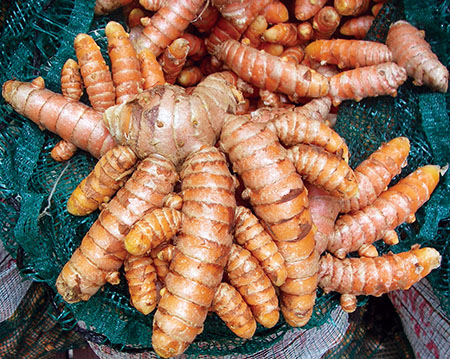
Keith: Wow. You’re saying that you develop a spiritual relationship with the ‘olena?
Kai: Yes. And even to the next level of consciousness. You don’t even have to consume it—no actual physical consumption [is required]—in order to be balanced by it. I can BE with the ‘olena—without consuming the ‘olena. Because our physical vibration is dense, we’ve been conditioned to thinking that we have to consume the ‘olena in order to become whole. No! I can just BE with the ‘olena. And then my sinuses, my cough, my cold is pono. Because I trust in Spirit, it goes out of its way to help me.
And that’s where the unique navigating, the unique embracing comes to play. So thus, the physical consumption has been conditioned in us to believe that we need to consume it in order to be whole, and that’s where the misconception lies.
You don’t have to consume me to be aware of me. You can just be with me. And that’s when the vibration and tone comes to play. But because of our dense physical vibration we assume we have to consume [in order] to be.
And that’s where the allopathic institutions have good intentions. But when the intent is not with Spirit—the control and manipulation comes into play. And anything not of Spirit—that’s where you observe. What roads do you take? How do you participate? What is your story?
Keith: So if I hear you correctly, lā‘au lapa‘au is as much metaphysical and spiritual healing as it is physical?
Kai: Of course. Think of the word dis-ease. Physical disease only occurs because spirit is not pono. Vibrational things are happening and a thought form is so powerful that you believe. My dad had asthma, therefore I am going to have asthma. You’ve been told this many times and after that you believe it. A thought form is so powerful. Thought directs energy. It’s ingrained—he had asthma, therefore I’m going to get it.
The reverse happens also. Dad took this lā‘au—this medicine—and involved trust. I trust grandma, I trust daddy, I trust grandpa so I take it, not a problem. And so when growing up, when something was not right, grandma was there, grandpa was there, and they took care of it. You don’t question it; you have total trust. Then after a while, it’s a common practice—you don’t even think twice about it. They knock you down and give it to you. ‘This is what you need.’ That’s it, and after a while you say, ‘Wow, this works.’ The belief, the trust, the connection—after that, there is no need to consume it. You already know how to navigate, how to pay attention before the physical manifestation.
And that’s why I don’t have a medical situation today. I choose not to. You can be self-responsible for your own path if you choose to.
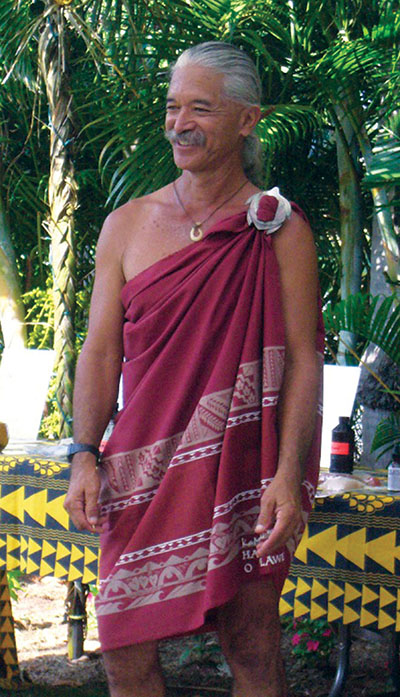
teaching and “Me being me.” photo courtesy of MalamaLomi.com
Keith: I have been told that the word “aloha” has a far deeper meaning and history than most people understand. How is “aloha” related to healing?
Kai: The word “alo-ha” has many old meanings. “Alo” means in the presence of the creator. And “ha” means we share the breath of life. Creator consciousness has no barrier. You embrace all with unconditional love. And if things are not right then ho‘oponopono comes into play. You still do your part—you forgive.
The more we honor people in their uniqueness, then we see no differences—we can truly see as human beings that we have different tones and we have different vibrations. It’s all about relationship and harmony.
“Man’s relationship with nature is to trust that evolved herbal plants create a new form of fire-breath-energy for life.”
Keith: This metaphysical aspect of lā‘au lapa‘au is fascinating. Tell me more about the importance of breathing and the “ha” and how creating a still, meditative state can lead to healing.
Kai: Good health comes by taking diligent awareness with Spirit of what’s going on. You need to take the quality time to pay attention—take a breath. And that’s why “alo–ha” is so essential. If you practice proper breathing—the ha—just that in itself can align things in so many ways if you observe.
I have an Aunty who’s been telling us for 50 years that she’s been dying. She got in this critical situation and she finally surrendered. I got her some lā‘au and taught her how to breathe and what she needed to do, and finally she reached this awareness. And I said, ‘You know Aunty, you’ve been dying for 50-something years, it’s about time you started living.’ And she finally realized she’s been dying, but never died—she’s been suffering. And she finally came to the conclusion—that’s not where life is.
Keith: Amazing. It’s interesting because I was brought up in the western world of allopathic medicine and programmed to “take this pill” to solve a medical problem without any of these other considerations. I’m beginning to see that the Hawaiian concept of lōkahi or balance is even more important because you are saying the psychological and spiritual components play just as important a role in the healing process.
Kai: Absolutely. My aunty made the shift and now everything’s about living. Now she’s living. Everything changed. All the dis-ease that she supposedly had is not her story anymore. Now she’s beginning her new path and her navigating with “alo-ha” because sheʻs still alive—still around—and she has a purpose.
“True health will be ours when we choose to live, breathe, and create from our true essence—as God-beings of light and love,” says Linda Mae Kaholokai.
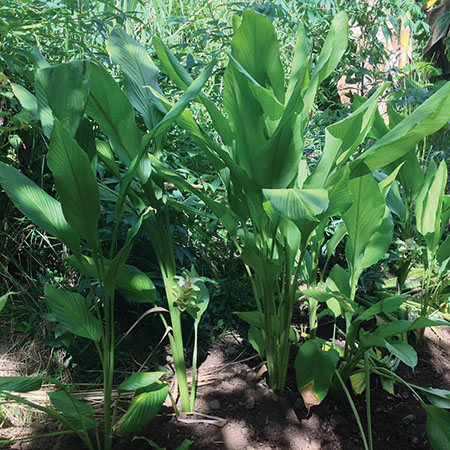
Keith: In studying the Hawaiian migrations and the Polynesian voyagers who settled 10 million square miles of the Pacific long before the Europeans ever left sight of their shores, one can’t help but learn about the indigenous plants and the lā‘au lapa‘au that kept them alive onboard the canoe and were ready to be planted once they reached land. What can you tell me about them?
Kai: In the Polynesian triangle from Easter Island to New Zealand to Hawai‘i you have the indigenous plants of Polynesia.
Twenty-four canoe plants were selected because of their properties, because if you travel you want to make sure you have all the necessary resources for lumber, for medicine, for food. So if you look at these plants—taro or kalo—that’s our staff of life. That’s our main bulk of food. Then coconut. All throughout Polynesia coconut has endless uses for food, rope, building supplies. With the coconut everything is used-—shell, bark, trunk, leaves, and sennet for rope.
For medicine, food, water—all 24 plants have their role. If that’s all you had, that would be the beginning of managing your resources and having the basics. And with the basics, it gives you a start. So the 24 canoe plants were the necessary basics for survival, for functioning and for expanding because they grow fast.
Keith: Legends say the voyagers maintained perfect health on those long voyages. Can you tell me how lōkahi or harmony went hand in hand with lā‘au lapa‘au to maintain their health and wellbeing?
Kai: It’s all about balance. When we have an ‘āhā,’ what all the kūpuna have been telling us is that there are categories or layers that make us up. There is a spirit body, a mental body, an emotional body, a physical body, and you have a soul navigating. You have all these different bodies that are ingrained in here [points to self], but all we see is the physical. And when spirit is not pono—not balanced—you have to take into consideration all these bodies because something will manifest itself in the physical body as some kind of illness. And in that awareness, for yourself and your self-discovery, when you get that ‘āhā,’ it shows you the area you have to focus on. Because just a little calibration, a little fine-tuning is all that’s necessary to help in your alignment. The voyagers were masters at lā‘au lapa‘au and relationships—with the natural world, the spirit world, and with each other.
Keith: Kai, tell me about the legendary Papa Henry Auwae.
Kai: I was blessed to have a special relationship with Po‘okela Kahuna La‘au Lapa‘au O Hawai‘i Papa Henry Allen Auwae (the master holder of the knowledge of herbal medicine). When he came and visited North Kohala, he stayed in our house and we set up workshops with other kūpuna who came to share. He had such clarity. And because of his clarity and his presence—the belief was there, the trust was there, the acceptance was there—and people began paying attention to things.
As with each gifted kūpuna like Papa, when they came there and they embraced you, they were trying to empower you. Ninety percent of healing is Spirit and only 10% is physical. He set a tone for everybody. And even though he is now gone, we are still blessed by him, and I am still inspired by him. ❖
Contact Kai Kaholokai: Kaholokai@gmail.com, 808.895.0905
Contact writer Keith Nealy: KeithNealy.com
Kupuna Talk Story ©2013 Keith Nealy Productions
